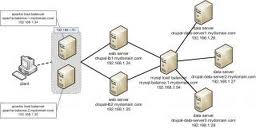Quality Analysis and Characteristic Evaluation of Diabetes Data Using Clustering Techniques
 This project focuses on analyzing diabetes data using clustering algorithms to extract meaningful patterns and evaluate data characteristics. It aims to assist in large dataset analysis by identifying the most effective clustering technique among K-Means, Partitioning Around Medoids (PAM), Minimum Spanning Tree, and Nearest Neighbor. These algorithms are applied to a diabetes dataset to study cluster quality and determine which provides the best partitioning.
This project focuses on analyzing diabetes data using clustering algorithms to extract meaningful patterns and evaluate data characteristics. It aims to assist in large dataset analysis by identifying the most effective clustering technique among K-Means, Partitioning Around Medoids (PAM), Minimum Spanning Tree, and Nearest Neighbor. These algorithms are applied to a diabetes dataset to study cluster quality and determine which provides the best partitioning.
It also includes a data characterization component that summarizes the attributes of positively tested diabetes cases using Attribute-Oriented Induction. This helps identify important patterns and correlations within the dataset.
User Interface
Windows-based user interface designed for ease of use and effective interaction.
Preferred Technologies
Java (Applets, AWT, Swing), C#.NET 2.0, or VB.NET 2.0
Functional Specifications
The analysis compares multiple clustering techniques and includes:
- Evaluation of cluster quality for each algorithm
- Rapid generation and visualization of clusters
- Attribute-oriented summarization of diabetic cases
- Identification of effective algorithm based on quality metrics
About Clustering
Cluster computing refers to using multiple independent systems linked together via a network to act as a unified computing resource. Clusters are typically composed of commodity hardware and local area networks, allowing for cost-effective parallel processing.
Clustering is commonly used for:
- High-capability processing (performance on single tasks)
- High-throughput (running many jobs efficiently)
- High-availability systems (fault tolerance)
- Enhanced I/O performance through parallelism